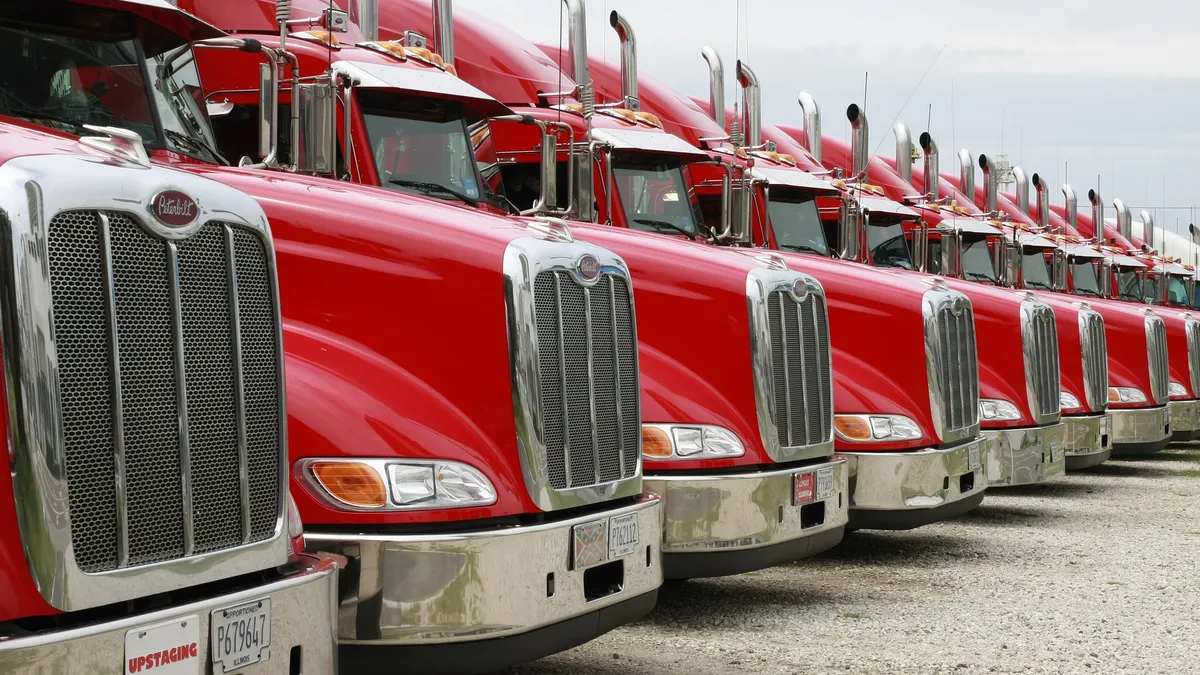Dive Brief:
- Retailers and suppliers such as Hormel Foods and Dollar General are exploring alternative approaches to shipping as freight costs continue to rise. According to the Wall Street Journal, their solutions include building their own truck fleets, reducing the frequency of pickup/delivery, and seeking better rates.
- According to Cass Information Systems Inc., U.S. trucking and rail-freight spending increased by more than 17% in May compared to May 2017. A number of factors have driven up prices, including a nationwide truck shortage, greater demand, bad weather and higher diesel prices.
- Analysts predict that this issue will become even more expensive for companies as shipping volumes typically peak in the late summer and early fall. Shippers, carriers and brokers polled by Morgan Stanley expect trucking costs to increase 6.4% this year on average.
Dive Insight:
The perfect storm of higher consumer demand and lower trucking supply is having a significant impact on profit margins for retailers and suppliers. During their most recent earnings calls, Kellogg Co. noted that freight is causing its most “acute” cost pressures, while General Mills Inc. issued a full-year profit warning due to increasing costs associated with the shortage of truck drivers.
Kellogg CEO Steven Cahillane said his company is able to navigate higher freight costs by leveraging its supply chain partners. Others, such as Hormel Foods and Smithfield Foods, have started to build out their own private trucking fleets to gain some control over this headwind, while Dollar General and Prestige Brands Holdings are diversifying their trucking fleets to drive more competitive pricing.
In other words, there are a number of Band-Aid solutions to reign in spiking freight costs. Their full impact — and whether or not they’re sustainable — has yet to be seen. Consumer spending, meanwhile, is expected to remain high throughout 2018.
If there is any good news in this scenario, it is that diesel prices are expected to drop after reaching a three-year high. But lower gas prices alone won’t be enough to overcome the root of the issue: a trucker shortage in an industry that is hugely dependent on trucking. Trucks carry more than 70% of the goods consumed in this country, according to the American Trucking Association. The disparity between demand and supply is driving per-unit freight costs up by double digits and that includes spot prices, which are up by more than 20% year-over-year. The issue is compounded when considering the special needs of food deliveries, including perishability and safety certifications.
There are a few promising technologies that could ease the pain. Uber Technologies launched Uber Freight to match truck drivers to shippers seeking freight transportation, offering incentives such as fuel discounts and truck purchases. Whole Foods and Target have optimized retail supply through “order-to-shelf” technology, with Whole Foods noting the technology was responsible for a 9% reduction in store-level inventories in Q4. Kraft Heinz and Hershey Co. are also making significant investments in their supply-chain technology that monitors truck temperatures and makes real-time adjustments.
On paper, the best solution will be one that gives shippers more control over their supply chain logistics. Private fleets, for example, are working for some companies, but they’re also a heavy investment and certainly not a cure-all. Dennis Organ, SVP of supply chain at Smithfield, said his company is in a relatively good spot with its private fleet but adds, “it’s definitely hit us.” This perfect storm, in other words, is showing no signs of letting up.








